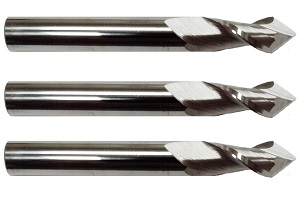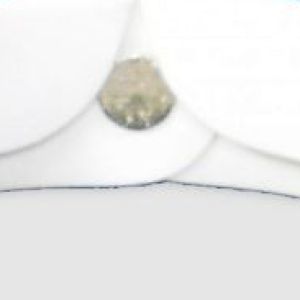Machining With Drill MillsPosted by johnhrq on January 8th, 2021 Milling machines have always been used to complete detailed manufacturing work using a wide range of materials. The invention of computer numerically controlled milling machines has helped to revolutionize the manufacturing industry by combining the precision of milling operations with the speed of computer controlled servos. These machines perform their cuts using specialized spinning tools like end mills and drill bits. Most of these tools are designed to perform specific tasks, but some milling cutters like drill mills have been designed to perform a wide range of functions.
Before driving into what makes drill mills so special, it’s worth taking a look at the differences between drill bits and end mills. Pretty much everyone knows what a drill bit is and the tasks that it performs. Your standard twist drill bit will have a pointed tip that cuts into material and spiral flutes that act as an auger, removing materials from the hole as the bit cuts. End mills may look somewhat similar to drill bits, but they are not designed to cut downward into materials. Instead, these cutters are designed to perform side milling operations, with sharpened flutes that slice into and remove material in their path. They typically feature either square or ball ends depending on the types of cuts they will have to perform. If the name did not give it away, a drill mill is a cutting tool that has traits common to both drill bits and end mills. The flutes are designed with the same sharp cutting edges as end mills, but with the pointed tip of a drill bit. This combination of features make these tools unique because they can cut vertically like a drill bit and they can side mill like an end mill. In addition to being able to cut small holes, drill mills can also be used to spot drill locations for larger holes so that your longer twist bits will be able to seat themselves properly without “walking” off their mark. Because these tools are shorter at a given diameter compared to your standard jobber length drill bit, they tend to produce extremely accurate results when being used to drill small holes. You can also side will with these tools, making them extremely useful for cutting a sort of inner chamfer on the inner edge of a cut. The sharp point on these cutting tools can also be used to perform quite a few different cutting tasks. When side milling, the pointed tip can be used to cut “V” shaped notches. As we mentioned earlier, the top can also be used as a spot drill as long as the tip angle of your drill mill is equal to or greater than the tip angle of your longer drill bit. You can even use a drill mill in place of a chamfer cutter for chamfering or beveling edges. While you are finishing up your workpiece, you can even use the tip to engrave designs on its surfaces. When purchasing tools for your shop, it is always important to consider quality. Solid carbide tools are often the best option in terms of lifespan for any milling tool. A carbide drill mill will stay sharp and outlast similar tools made from high speed steel alloys. If you want to find some high quality tools, you need to check out Online Carbide. At www.onlinecarbide.com you will find a wide selection of high performance cutting tools including end mills, drill bits, and drill mills made from solid carbide. For more information about Carbide End Mill Set and Spot Drills Please visit : Online Carbide. Like it? Share it!More by this author |



